Driving down Moshup Trail in Aquinnah, it’s easy to feel left out of the cool kids club as you pass by gate after gate, chain after chain of locked-away beach. But for a few lucky souls, there exist magical keys. Jiggering a key into a rusted and salted-over lock is a two-person project. There’s a slight thrill as it opens. The dunes are steep and the kid inside of you can’t resist running down the steep slope.
Goff Beach has 17 members, but on a slightly overcast day in the middle of the week the only company on the beach are the krill lining the shoreline and the terns huddling together a few feet away. Does the water feel different than public beaches such as Joseph Sylvia State Beach in Oak Bluffs? Do the gulls harp a different tune? Are the shells extra brilliant? It’s true, the sand has an extra squeak of cleanness to it, absent at public beaches, but otherwise much appears to be the same.
Looking out across the water, Noman’s Land appears to be just a swimming distance away and Cuttyhunk looks like a booming metropolis rather than an island no bigger than a speck on a map.
“It’s a glorious experience, there’s something really special about going to a beach that’s less crowded and you feel connected to,” said key holder Julie Flanders. “It’s a continuum, knowing your parents and grandparents went there.”
It also offers an escape, said Ms. Flanders, a year-round native Islander and working mother.
“I don’t usually have to talk to people, if I see someone I’ll give them the head bob,” she said. “That’s one of the beauties of a private beach, you can do that.”
While private beaches are a common phenomenon in America, key beaches are a more particular breed. The concept originated with a 17th century law intended to encourage property owners to invest in wharves and boat yards. This also gave them ownership of the beaches connected to their land. Massachusetts is only one of two states in the country which allows beach ownership to the low tide mark, the other being Maine.
The size of the beach lots ebb and flow with the tide, but in this case size doesn’t really matter. Access does. Key beaches are not demarcated, you put your towel there, I’ll place my umbrella here. Rather, the beaches are open, to those who have keys to the gate, that is.
Keys are passed down through the family or they go up for sale on the open market. Fifty years ago a lot at Hancock Beach in Chilmark could be purchased for $2,000. This summer a Hancock Beach lot came on the market for $500,000.
There are about a dozen key beaches scattered across the Island in Edgartown, Chilmark and Aquinnah. Quansoo, Hancock and Black Point Beaches are the big three in Chilmark. Aquinnah key beaches include Goff Beach, Dogfish Bar, the 538 Association and Oxcart Road. To look at key beaches merely through today’s lens and prices, one who does not own a key may want to cry foul. But the history and culture of these beaches is actually much like the Vineyard itself: a complicated mixture of Islanders who were lucky enough to get here first (and tough enough to stick it out) who have fond family memories, and new money who bought into this paradise for a hefty fee, all cohabitating towel-by-towel, in a mostly-agreeable fashion.
Historic Quansoo
Quansoo Beach lots were largely held by the Manter, Whiting and Bigelow families, but then in the 1940s began to be sold off into small lots. Soo Whiting’s father, Johnson Whiting, was one of the original land owners.
“That’s when my father’s military and academic friends bought property along the edges of the pond,” she said. “A lot of it has to do with friends of friends, academic buddies or business buddies. For a while it was called Academics Row . . . because it was pretty much everyone who taught at different universities.”
Longtime West Tisbury resident Cynthia Riggs’s great-aunt Elvita Cleveland bought a piece of property from Delley Mitchell in 1920 at Quansoo Beach. The sliver of beach front had a small fishing shack that was swept away in the hurricane of 1938. But if you were to cross the bridge at Quansoo today, the house would have been immediately to the left before you arrived at the dunes, Ms. Riggs said. The china cabinet was later found fully intact at the end of the pond, and some of the china is still in use by Ms. Riggs to this day.
“It was a fishing shack with two little rooms in it,” she recalled. “My great aunt gave it to my mother and father as a wedding present, and they spent their honeymoon there. They went swimming without their bathing suits because no one else was there and it was not a big deal.”
“One of my earliest memories of the fishing shack is out on its porch. I can remember being in my crib and my mother putting mosquito netting over the crib,” she continued. “I didn’t want it, I remember batting it off and I remember them saying, ‘but the mosquitoes are going to bite you.’ I was stubborn enough and the mosquitoes bit away.”
Ms. Riggs said her father would often taunt one beach guard who took his job very seriously, by pretending to be a beach-crasher and making the guard chase after him far down the beach before he revealed himself.
“My parents had a canoe on the pond at Daniel Manter’s boathouse and we would walk down there. I remember being small and riding on my dad’s shoulders,” Ms. Riggs remembered. “My parents would come with me down to the beach and my two sisters, who are older than I am, they would ride their bicycles down and I would be [canoed] down to the pond.”
Going to Quansoo continues to be a family affair for Ms. Riggs, her two sisters and their families. But while they all enjoy the access to the beach, the sisters, like their father, are “very much opposed to the idea of a beach set aside for private use,” Ms. Riggs said.
“Beaches are traditionally open to the public, open to fishermen, open to walkers and we’re appalled at the idea that these things are being closed off, to say I own a piece of beach and no one else can steal my view,” she said.
“I think it’s awful,” she said. “Typically un-Vineyardy.”
And yet, in a sense, key beaches are very Vineyardy, both in their uniqueness to this area and how they serve as yet another representative of how the Island can be viewed as a microcosm for income trends in America.
According to Julie Flanders, who runs David Flanders Real Estate in Chilmark, starting in the 1980s Quansoo and Black Point Beach lots were priced between $10,000 and $15,000 per lot. Ten years later, these same lots sold in the $90,000 to $100,000 range. In the late 1990s lots at Quansoo and Hancock sold for $100,000 one year and $170,000 a year later. By 2003, Black Point Beach lots were selling for $375,000. Lots prices leveled off in the mid-2000s, and dropped back down to the $260,000 range in 2008 and $225,000 in 2010.
But current trends are pointing to an uptick in the sales of beach lots. In fact 2012 could be a banner year for beach lot sales. In addition to the recent listing for a Hancock lot of $500,000, another lot there sold for $465,00 in April, and a Black Point lot was listed for $325,000 this month.
“It’s all about supply and demand, they’re not making any more beachfront,” Ms. Flanders said. “Water is going to become a commodity and people are starting to recognize that. Access to water for survival and access to water for privacy and pleasure are going to become scarce.”
Hancock Beach
The land surrounding Hancock Beach was originally owned by Herbert Hancock. When his friends wanted to use the beach, Mr. Hancock would lend them the key on every occasion. In the 1950s, he divided the beach into slivers, subsequently creating the Hancock Beach Association.
Current Hancock Beach association president David Heilbroner said beach lot owners range from newcomers who paid a hefty price for lots to families who have had them forever.
“It’s very representative of new Vineyard and old Vineyard,” he said. “The one thing that unites everyone is a sense of we have a really beautiful and precious piece of pristine Martha’s Vineyard, and there aren’t many left.”
Mr. Heilbroner said when he was growing up he always left the gate unlocked “as a statement” and acknowledged that the key beach system can still seem elitist.
“That’s an open secret,” he said. “We’re very well aware there is a sense of anger for some people. The distance of the gate is taken by a great many people as an affront, and I get that.”
The gate is more than a mile and a half off of South Road.
“But everyone in the beach association greets it as something precious to be guarded, almost like we have a wildlife preserve that we co-manage. There’s a great deal of love for the land, it’s not just a little playground, in fact it’s quite the contrary.
“I’ve been here for 50 years, and there’s not a single dear friend of mine who hasn’t walked down this long road and gone to the beach with me. There’s a huge emotional and personally historical reference for us,” Mr. Heilbroner said.
The area has remained largely unchanged over his lifetime, he said. He attributed that to former Chilmark conservation agent and Hancock Beach land owner Russell (Rusty) Walton, “the patron saint of the road.”
“Rusty was a naturalist and knew intimately the rhythms of wildlife, flora and fauna here,” he said.
Stepping through the ponds of water that had collected in the beach parking lot, Mr. Heilbroner looked out over the dunes and expansive beach.
“It’s the same sand, same ocean,” he said standing at the water’s edge as the tide ebbed. “It’s absolutely pristine. We’re one step removed from being a nature preserve.”
Unlocking the Gate
The thing about key beaches, though, is that in most cases there literally is a key to open these gates to paradise. Beach associations charge an annual fee in exchange for just two keys per beach lot, which makes for very valuable pieces of hardware. And as the main distributor of keys for three of the beach associations, Andrea Hartman has heard every excuse and plea in the book as keyholders try to wrangle an extra.
“I have stories of people stealing or appearing to steal things or not telling me the truth to get one more key, which they really can’t,” Ms. Hartman said. “You have to be very careful. I don’t get into arguments with anyone. I just pass it on to the associations.”
Ms. Hartman used to live in New York city, something that has proven useful in her dealings with key holders, she said.
“I think I still have a little residue of that watchfulness in me, even though this is the one place in the world were you can trust people,” she said.
New keys must be picked up each year and distributions begin in April. But while Ms. Hartman is the go-to gal if a key is lost during the course of the summer, the key journey does not begin with her. The keys are largely made by Island locksmith Buzz Blankenship. They are made of brass and magnets and designed by lock company Multi Lock. Mr. Blankenship said the company is best known for their manufacturing of prison locks.
Walking into Mr. Blankenship’s locksmith shop may be a Vineyarder’s closest experience to Ollivander’s Wand Shop in Harry Potter. Slender boxes of keys and locks line the walls, the floor is littered with whimsical key designs and there’s a slight shimmer to the countertops from leftover metal trimmings.
It is in this Oak Bluffs basement, nowhere near a beach, where magic begins. Mr. Blankenship makes keys for Squibnocket Associates beach at Long Beach, the 538 Association and Ox Cart Road off Aquinnah’s north shore, Quansoo, Black Point and Hancock Beaches, among others.
“There’s a floating [magnetic] chip inside the key and if this thing can’t float it won’t be able to open the lock,” he said one evening this week. “A solid key doesn’t work, it just jiggles around.”
Every February, the beach associations notify Mr. Blankenship of how many keys to make for the season. Each key takes about two minutes to make. And then in March, he heads out to the quiet dirt roads and changes the locks.
Locks to key beaches used to be simple desk locks, pickable with a twig, Mr. Blankenship said. Most of the beaches now opt for magnetic activated locks that don’t rust and can handle the salty air. He has been making beach keys since the 1990s, but he remembers a time when there were no locks or gates and a kid from Oak Bluffs could enjoy these private beaches.
“We used to go down to Quansoo Beach when we were young,” he said. “People thought we were nuts because we traveled so many miles off the road to get there.”
Keys are stamped with several indicators — Mr. Blankenship’s number, the beach’s initial, the year and key number. Hanging on the wall are keychains full of keys from previous years. They are lettered QB for Quansoo Beach, BP for Black Point and HB for Hancock Beach.
Mr. Blankenship wouldn’t comment on what people had offered him in exchange for a key, the stories are too many to recall. “They’ll do anything,” he said.
But he did offer up one story about how two famous Vineyarders once attempted to make one key into two.
“The president of one of the associations called me up and asked me if I used plastic heads [on the tops of keys], and I said no, you can’t stamp them. But he had found one, and I said I never made it. Come to find out they [the key copiers] had taken the thing back to New York city and had made an extra key.
“It was William Styron’s key that was copied for Mike Wallace,” Mr. Blankenship said with a light laugh.
Associations, No Keys
Not every private beach wants to be referred to as a key beach, though. Black Point Beach has 81 beach lots and president of the beach association, Robert Fogelson is quick to point out it is not a key beach, but “an association of people who own strips of beach,” he said. The association was founded in the 1980s by a group of friends.
“The key is something the members receive by virtue of paying the dues. You don’t own a key, you own a beach lot.”
Mr. Fogelson has been coming to the Vineyard since the 1970s, and now enjoys watching his family grow up on the water.
“I enjoy the beach, why wouldn’t someone?” he said. “I remember watching over my stepdaughter and nieces and nephews and now great-nieces and nephews go swimming.”
In Katama things are even less formal. At Crackatuxet Beach, there is no key but rather a guard making sure you are a recognizable face. Founded in 1956, there are 34 shareholders who own about 15 acres off of Crackatuxet Cove. Each of the shareholders owns a piece of property through a trust created by Tom Osborne.
“We have a caretaker out there during the summer to keep an eye on things,” trustee David LeBreton said. The caretaker lives in small shack during the summer. “The shack has served the shareholders very well... when the caretaker wasn’t there, it was a lot of fun for us teenagers.”
Asked if he had any fond memories, Mr. LeBreton said “Oh God yes, if they’re not all drowned.”
“The young folk would go out in the evening to have get-togethers, all very innocent of course,” he said.
Today, the same group of families and friends who were part of the original 20 friends still enjoy each others’ company.
“It’s a nice haven, an oasis where everyone knows everyone or you can walk down the beach and be by yourself if you wish,” Mr. LeBreton said.
Unlike the up-Island beach lots, the turnover rate at Crackatuxet is minimal. The last time there was a shareholder sale was 18 years ago. If a shareholder decides to give up their share, it is sold back to the trust. There is a small waiting list of friends of shareholders.
“Very, very few people sell their share and instead opt to transfer it to the next generation,” Mr. LeBreton said.
Mr. LeBreton said the price for a share is not made public, but they “keep it down so it’s not a money-maker for anyone.”
“We don’t want to encourage that,” he said. “It’s supposed to be a nice summer social vehicle. We don’t want people thinking it’s an investment.”
“We’re a small social club,” he continued. “We’re lazy and laid back.”
Of the 53 miles of shoreline around Martha’s Vineyard, 42 miles of it are sandy beaches. According to the Martha’s Vineyard Commission numbers from 2005, 37.5 per cent of the Island’s shoreline is public; the remaining 62.5 per cent is restricted to town beaches or is held privately. But those numbers, like all hard facts, do not tell the whole story. Key beaches are part of the history of Martha’s Vineyard, places where Island families have gathered for decades and newcomers now come to create their own legacy. The sand and the ocean along these beaches are the same, relatively, as on those beaches open to all. Just a lot less crowded.


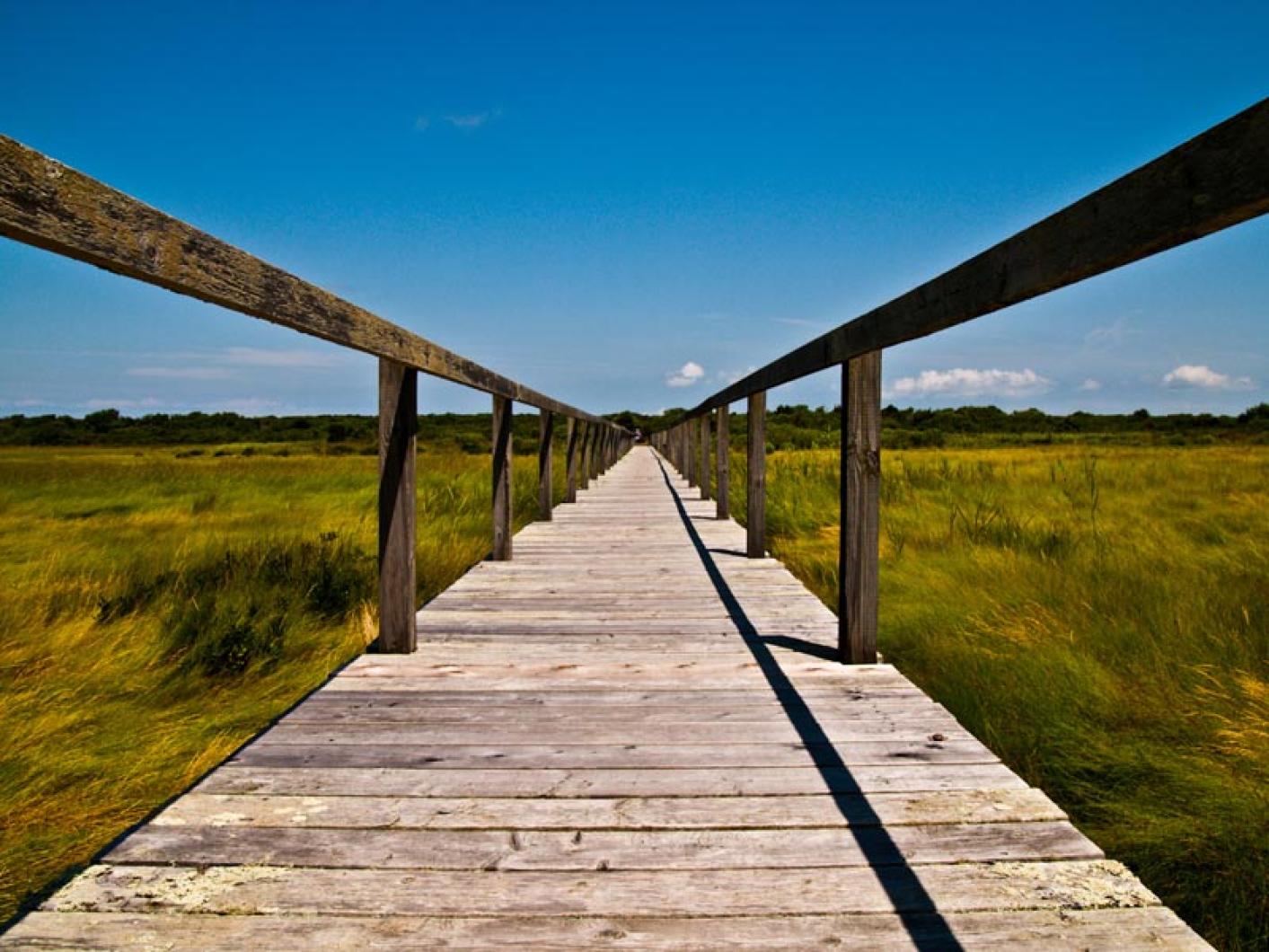
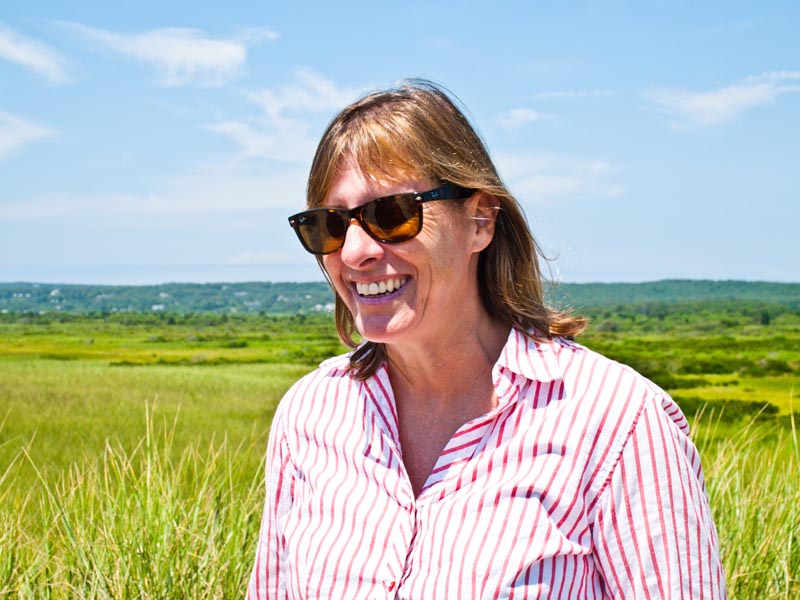
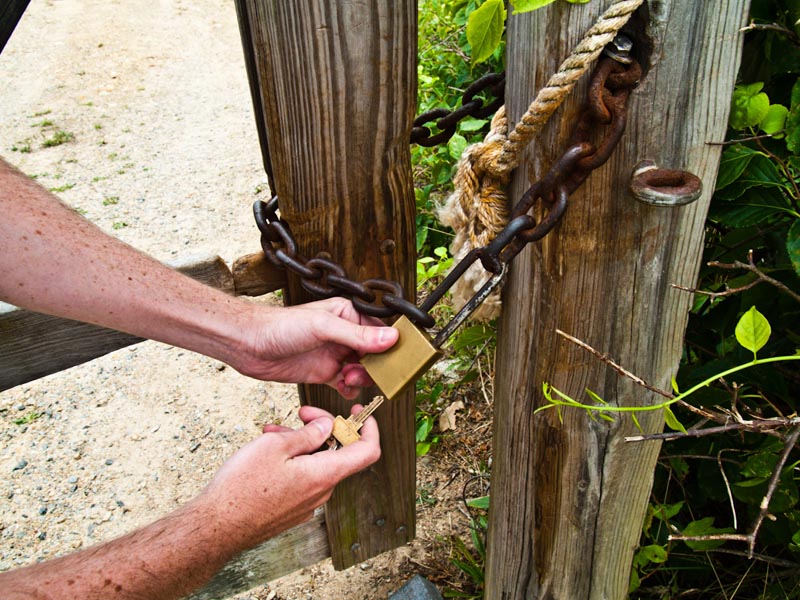




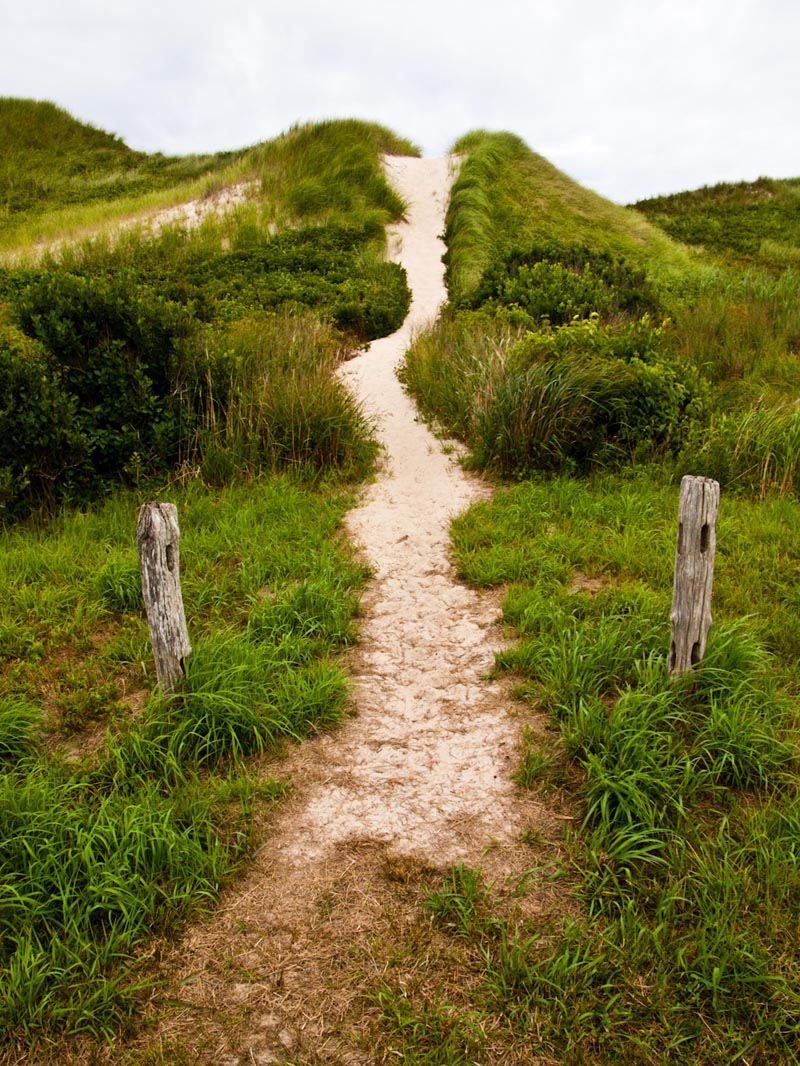
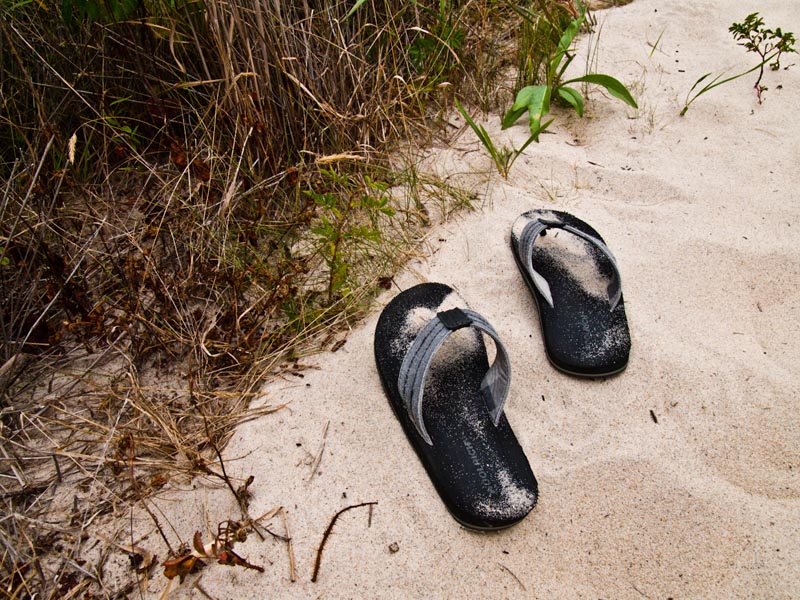


Comments (10)
Comments
Comment policy »